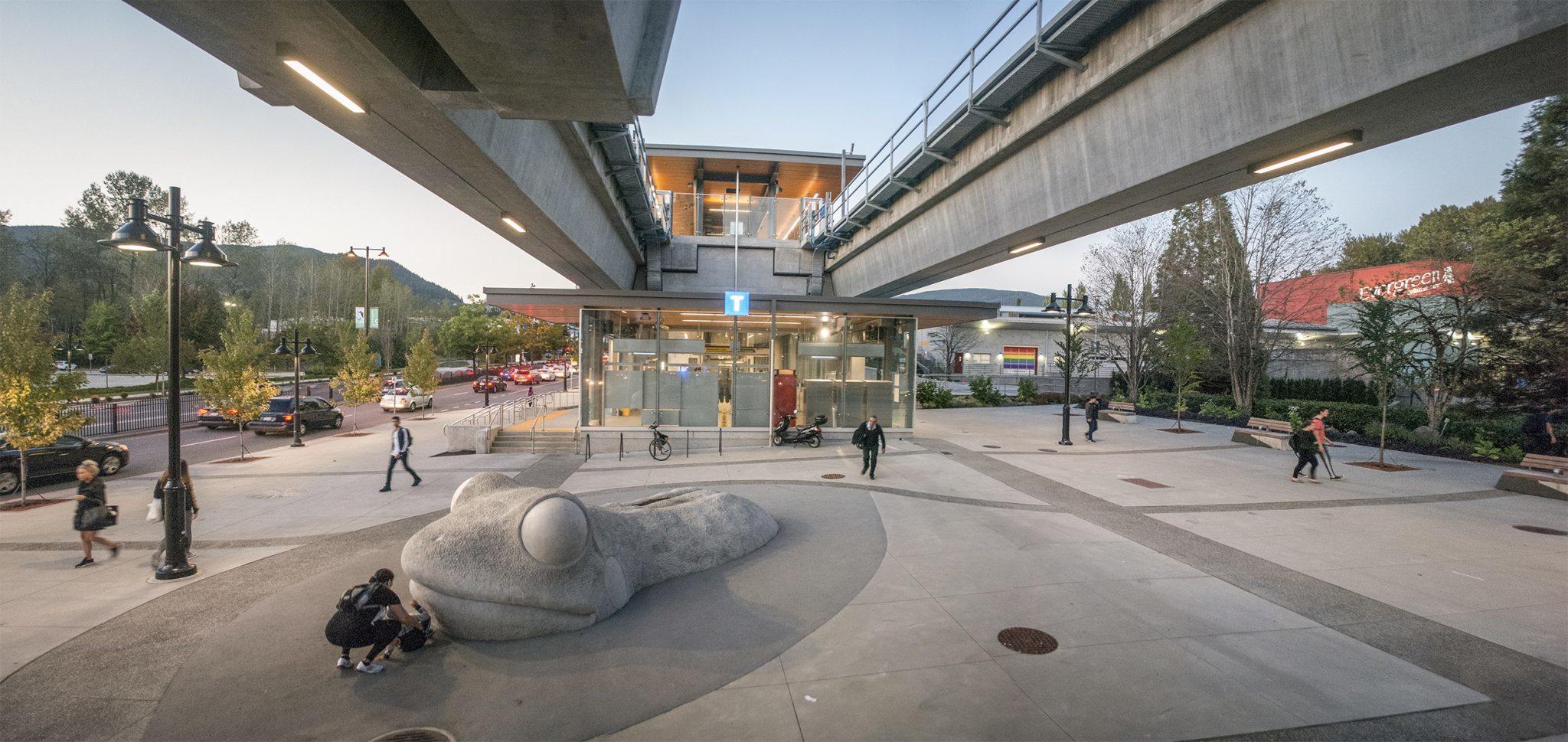The GREY of the guide-way copies the GREY of the buildings.


Too bad they couldn't copy the tree canopies. Maybe they should add trees along them, bad news is that it would take decades before they look decent.
That gray is pervasive everywhere.
The columns are lighted in places with colour changing lights.
Coquitlam has integrated the line well, whereas Burnaby doesn't care as much.
Our aim was to change the perception that train stations are merely operational by revealing their potential as a gathering space to meet a friend or sit and people watch.

hapacobo.com
More station precinct pics at the lnk above.
Here’s a first look at our latest work with the City of Coquitlam, enhancing the Evergreen Line along North Road and Clarke Road. We were commissioned to manufacture and install the North Star Gateway Feature, Clarke Road Gateway Feature and Street Markers, illuminating the route with a dynamic...

www.stateoftheartconcepts.ca
More lighting pics at the link above.
Trees shed leaves that would fall on to the guideway.
While SkyTrain uses linear induction, so there aren't major concerns about wheel slip, I think they still are concerned about leaves on the rails.
They've been saying for decades they deserve more than streetcars, which they absolutely do.
Yeah, there are many options between streetcar and subway, much of it to do with the built form of the rails/guideway.
Elevated suburban rail should be bundled with rezoning and redeveloping all low density lots fronting the arterials.
Goes with the classic chicken and egg debate (highly dependent on willingness of municipalities to upzone):
- build to serve existing growth; or
- build to manage or shape future growth (which for elevated lines, results in a more integrated/harmonious built form).
If you build a line through a desert lined with strip malls, the developers will come and build it up - and there wouldn't be anyone to complain about their neighbourhood being destroyed. Typically, however, those deserts are also light industrial areas, so you'd end up with a loss of that type of job space.
If a City has plans to receive a transit line (like Coquitam did before the Evergreen Exrension) it can rezone in advance around the future line and reserve a right-of-way and then you will see a line snake around existing towers. Coquitlam even put approvals on hold because development was outpacing the proposed delivery timeline for the line (delayed 10+ years).



